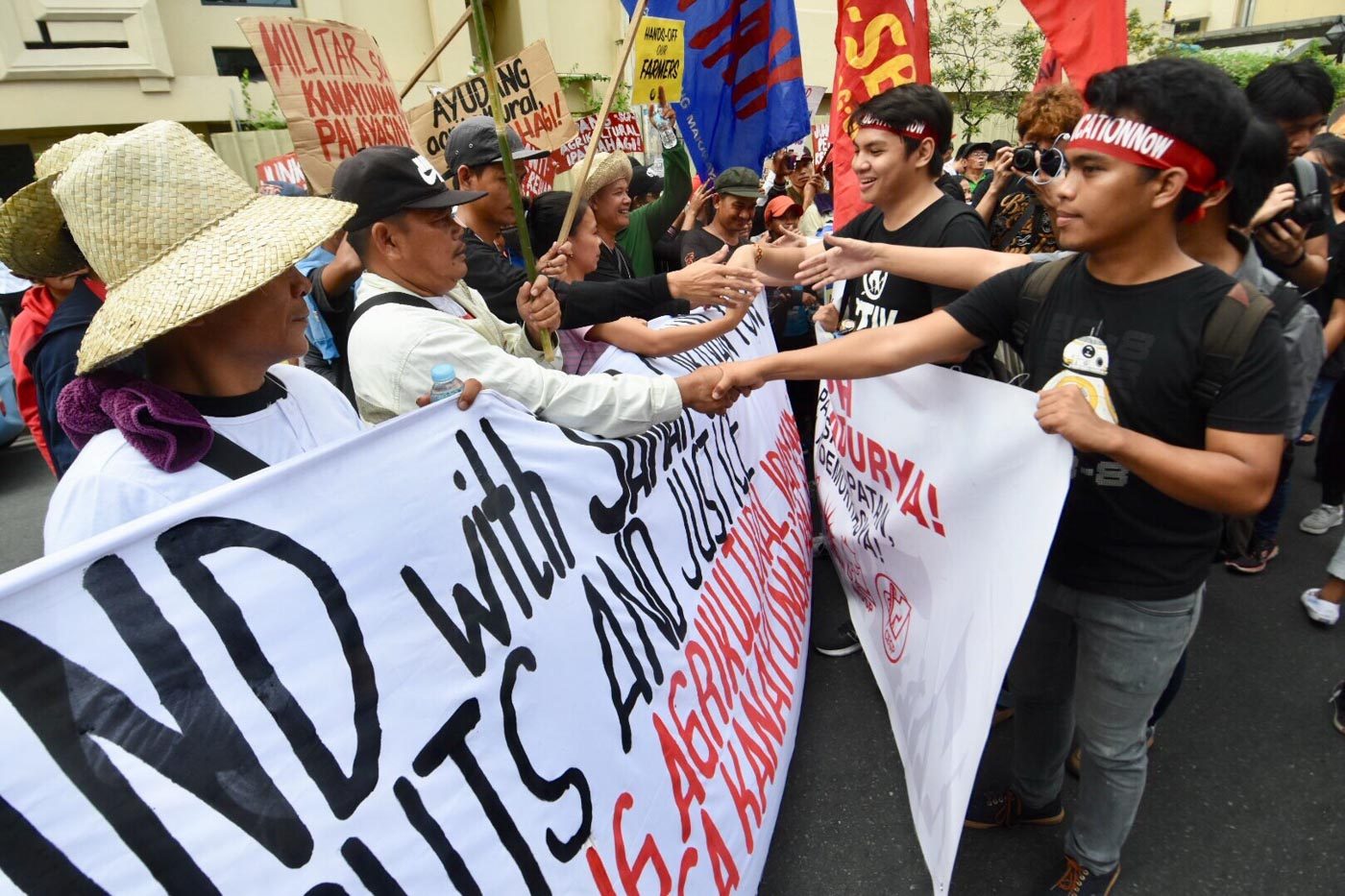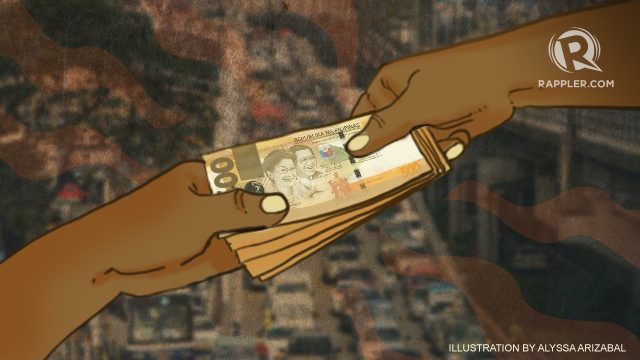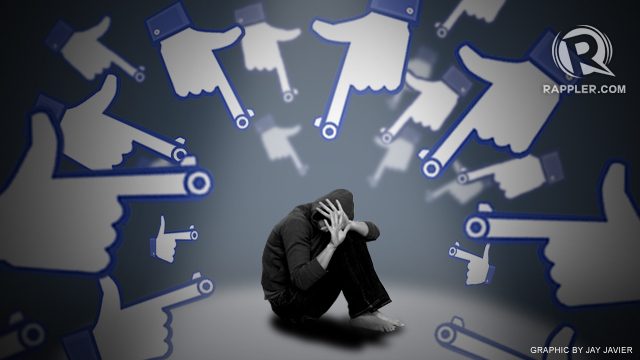SUMMARY
This is AI generated summarization, which may have errors. For context, always refer to the full article.

MANILA, Philippines – Several events challenged the state of democracy in the Philippines in 2018.
Growing threats against government watchdogs, the Marawi siege, and the unrelenting and brutal campaign against drugs have resulted in cracks in the country’s overall democratic system.
The Philippines, tagged as a “flawed democracy,” ranked 51st out of 167 countries in the latest Democracy Index report released by the Economist Intelligence Unit in 2018.
“The indefinite declaration of martial law in the southern state of Mindanao in the Philippines, and the rule of country’s strongman leader, Rodrigo Duterte, adversely affected the quality of democracy in the Philippines,” the report said.
“Mr. Duterte has led the way among the many Asian countries that are infringing democratic values,” it added.
While the Philippines still enjoys a more open and progressive democracy within Asia, a look at the factors that affect democracy show that the country is on a downward trend compared to other countries around the world.
Still ‘partly-free’
The Philippines is classified as a partly-free country in the recent Freedom in the World report with an aggregate score of 62 over 100.
Independent watchdog organization Freedom House said that while government institutions are “well-developed” in the country, its long history of impunity and insurgency continue to affect freedom enjoyed by citizens.
Among 162 other countries, the Philippines is the 73rd most free according to another report by Fraser Institute. Regionally, the country ranks high with a freedom index score of 6.92 – 3rd among 17 other Asian countries.
The state of personal freedom improved from the previous year, climbing 4 spots from 104th to 100th, while economic freedom declined.
Most personal freedom indices increased, except for religious freedom at 8.5 and expression and information at 8.2. The Philippines also became more open and accepting of identity and relationships, as the score improved by 2.5 points this year.
Under economic freedom, the size of government, legal system and property rights, and freedom of international trade all dropped slightly.
Deteriorating rule of law
The World Justice Project dubbed the Philippines the “biggest mover” for this year’s Rule of Law Index report after it dropped 18 ranks from the previous year, now ranking 88th out of 113 countries.
The Philippines also ranks 13th out of 15 East Asia and Pacific countries with an overall score of 0.47, just above Myanmar and Cambodia.
There was a significant decrease in half of the factors taken into account in the report. Among 8 factors, the Philippines saw a decline in adherence to fundamental rights (99th), order and security (107th), civil justice (81st), and criminal justice (102nd).
Among these, order and security dropped the most, falling 30 places from its 2016 rank of 77th. This comes during a year strained by Marawi clashes, a crackdown on members of the political opposition, and the continuing drug war.
There are minor decreases in constraints to government powers (59th), absence of corruption (62nd), and open government (54th). The Philippine ranking in regulatory enforcement remained unchanged at 55th since 2016.
Worsening corruption
Corruption in the country worsened in 2018, moving down 10 spots from last year’s ranking. According to a report by Transparency International, the Philippines ranked 111th out of 180 countries with an index score of 34 out of 100.
This has been the lowest index score since 2012.
In Asia, the Philippines is the 21st least corrupt among 30 countries included in the report.

The low rank is attributed to the increase of threats and violence against journalists, activists, opposition, and other members of watchdog agencies.
“Philippines, India and the Maldives are among the worst regional offenders in this respect. These countries score high for corruption and have fewer press freedoms and higher numbers of journalist deaths,” the report stated.
There were 3 media killings in the country this year, namely the deaths of reporters Edmund Sestoso, Dennis Denora, and Joey Llana from May to July. (READ: When journalists become the story: Attacks against media in 2018)
Filipino journalists also continue to face countless troll attacks and threats on social media daily. (READ: Media groups record 85 attacks on press freedom under Duterte)
Transparency International also found that majority of the countries are making “little to no progress” in combating corruption, with two-thirds of the countries scoring an index below 50 or becoming more corrupt.
Tighter hold on press freedom
The Philippines dropped 6 spots in the 2018 World Press Freedom Index of media watchdog Reporters Without Borders (RSF) amid President Duterte’s tirades against the media. The country was ranked 133 out of 180 countries with an index of 42.53.
“The line separating verbal violence from physical violence is dissolving,” the report said. “President Rodrigo Duterte not only constantly insults reporters but has also warned them that they “are not exempted from assassination.””
The country was also tagged as “Asia’s deadliest country for media” after 4 journalists were killed in 2017.
Furthermore, the Philippines ranked 5th out of 14 countries checked by the Committee to Protect Journalists in its most recent Global Impunity Index reports, which “ranks states with the worst records of prosecuting the killers of journalists.”
While the Philippines saw an improvement in its index score from previous years, it still holds the most number of unsolved media deaths. Currently, there are 40 pending murder cases of journalists in the country.
According to CPJ, 82 journalists and media workers have been killed in the country from 1992 to 2018. (READ: IN NUMBERS: Global threats to press freedom in 2018)
More ‘authoritarian’ online sphere
Freedom House saw a rise in “digital authoritarianism” on the internet in 2018, as disinformation and propaganda filled online discussions and communities.
The Philippines suffered from this, with internet freedom slipping from free to partly-free. The country ranked 31st out of 68 countries around the world in this year’s Freedom on the Net report.
It is, however, the 3rd country in Asia with the most freedom online. (READ: A profile of internet users in the Philippines)

The report noted that the downgrade resulted from “content manipulation and cyberattacks” as well as “harassment of dissenting voices” which contributed to distortion of information.
The Philippines also falls among countries whose governments have enforced regulations against alleged “fake news” to justify the crackdown on online dissent. Earlier this year, the Duterte administration ordered the shutdown of online news site Rappler over alleged foreign funding violations.
The organization also noted key internet controls (KICs) or restrictions on political, social, or religious content enforced by the government or other authorities at an attempt to censor information.
KICs recorded in the country include deliberate disruption of Information and Communications Technology (ICT) networks, manipulation of online discussions by pro-government commentators, and technical attacks against government critics or human rights organizations.– Rappler.com
Add a comment
How does this make you feel?
There are no comments yet. Add your comment to start the conversation.